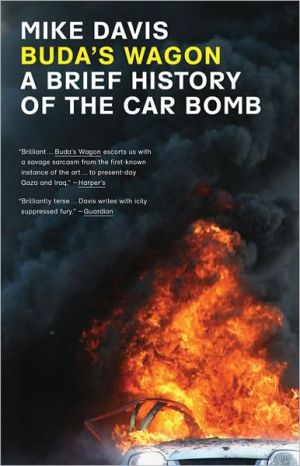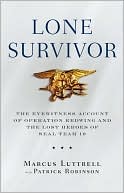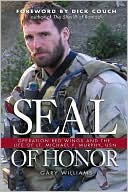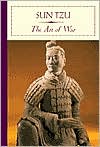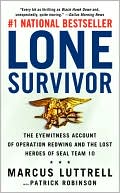Buda's Wagon: A Brief History of the Car Bomb
In this provocative history, Mike Davis traces the car bomb's worldwide use and development, in the process exposing the role of state intelligence agencies—particularly those of the United States, Israel, India, and Pakistan—in globalizing urban terrorist techniques. Davis argues that it is the incessant impact of car bombs, rather than the more apocalyptic threats of nuclear or bio-terrorism, that is changing cities and urban lifestyles, as privileged centers of power increasingly surround...
Search in google:
A gripping history of the car bomb tracing the global development of this weapon of terror and resistance. Publishers Weekly From the world's first car bomb in 1920 (actually a horse-drawn wagon, exploded by anarchist Mario Buda in downtown Manhattan), to those incessantly exploding in Iraq, Davis shows how these "quotidian workhorses of urban terrorism" are responsible for "producing the most significant mutations in city form and urban lifestyle." Whether the product of fringe militancy or "clandestine state terrorism," Davis shows, the car bomb has a limitless capacity to create and sustain fear (largely because of low cost and technological accessibility). Given the weapon's ubiquity in modern times, a "brief history" scarcely allows room for the numerous theaters of conflict within which the car bomb has evolved, including Northern Ireland, Beirut, Israel, the U.S. and Colombia, let alone much political background on, say, the Tamil Tigers' bombing campaign in Sri Lanka. At its best, this is a gripping supplementary history, full of surprising, often contrarian facts and voices behind some of the most spectacular acts of violence on record. Despite clearly populist sympathies, Davis steers away from romanticism, keeping tight focus on the indiscriminate violence inflicted upon innocents. Packed with horrific and heartrending details, the book goes beyond the statistics to portray the human and moral costs of this gruesome political lever. Photos. (Apr.)Copyright 2006 Reed Business Information.
Figures and Tables ixWall Street 1920 1Poor Man's Air Force 4Preliminary Detonations 13Oranges for Jaffa 18Our Man in Saigon 28Festivals de Plastique 32Demon Seeds 38Welcome to Bombsville 43"The Black Stuff" 53Laughing at the Dead 61Hell's Kitchen 67The Beirut Hilton 78Car-Bomb University 90The Suicide Tigers 97Soft Targets 103Los Coches Bomba 109Cities under Siege 116Form Follows Fear 130Killing Bush, Bombing Oklahoma 139Planet Jihad 156The King of Iraq 170The Gates of Hell 188Notes 196Index 221
\ Publishers WeeklyFrom the world's first car bomb in 1920 (actually a horse-drawn wagon, exploded by anarchist Mario Buda in downtown Manhattan), to those incessantly exploding in Iraq, Davis shows how these "quotidian workhorses of urban terrorism" are responsible for "producing the most significant mutations in city form and urban lifestyle." Whether the product of fringe militancy or "clandestine state terrorism," Davis shows, the car bomb has a limitless capacity to create and sustain fear (largely because of low cost and technological accessibility). Given the weapon's ubiquity in modern times, a "brief history" scarcely allows room for the numerous theaters of conflict within which the car bomb has evolved, including Northern Ireland, Beirut, Israel, the U.S. and Colombia, let alone much political background on, say, the Tamil Tigers' bombing campaign in Sri Lanka. At its best, this is a gripping supplementary history, full of surprising, often contrarian facts and voices behind some of the most spectacular acts of violence on record. Despite clearly populist sympathies, Davis steers away from romanticism, keeping tight focus on the indiscriminate violence inflicted upon innocents. Packed with horrific and heartrending details, the book goes beyond the statistics to portray the human and moral costs of this gruesome political lever. Photos. (Apr.)\ Copyright 2006 Reed Business Information.\ \ \ \ \ Foreign AffairsMario Buda was an anarchist who blew up a wagon full of explosivesat the corner of Wall and Broad Streets, in New York City, in 1920. Forty people were killed and 200 injured. There was immediate panic and a declaration of national emergency -- a big impact for relatively little effort, even if capitalism survived. Davis is impressed by this disproportion of effect to effort. Car bombs are stealth weapons that are a cheap and operationally straightforward way of getting explosives to a target, and they make enough noise that they cannot be ignored. For these reasons, they are the ultimate in asymmetry. But if they empower the weak, they also tend to be indiscriminate -- so they particularly empower those who are not concerned about carnage. Davis has cataloged many car-bombing episodes, showing how they have been used by groups ranging from Hezbollah and the Vietcong to the Mafia, the Stern Gang, and even the CIA. With so many grim stories to tell in a brief book, the context of individual episodes is often sketchy, the underlying political analysis shallow, and the prognosis alarmist.\ \ \ Library JournalOn September 16, 1920, an Italian anarchist named Mario Buda parked a horse-drawn wagon across the street from the J.P. Morgan & Co. building in New York. At noon, the explosives in the wagon ignited, killing 40 people and injuring more than 200. This event marked the first modern use of an inconspicuous vehicle to transport explosives to a target anonymously; as Davis (The Monster at Our Door: The Global Threat of Avian Flu) puts it, this was the prototype of the car bomb. Davis traces the use of the car bomb from the 1920s to the late 1940s, when Zionist guerrillas used the device against both the British and the Palestinians during the fighting leading up to the founding of Israel, and then continues through various international conflicts from Vietnam to Ireland to Iraq. He also presents the evolution of the explosives used in these bombs, from TNT to the ammonium nitrate and fuel oil mixtures used by the Irish Republican Army and convicted Oklahoma City bomber Timothy McVeigh. Davis's well-written and well-documented account joins a list of recent books on modern weapon systems, e.g., Larry Kahaner's AK-47: The Weapon That Changed the Face of War. Recommended for all libraries.\ —Stephen L. Hupp\ \ \
